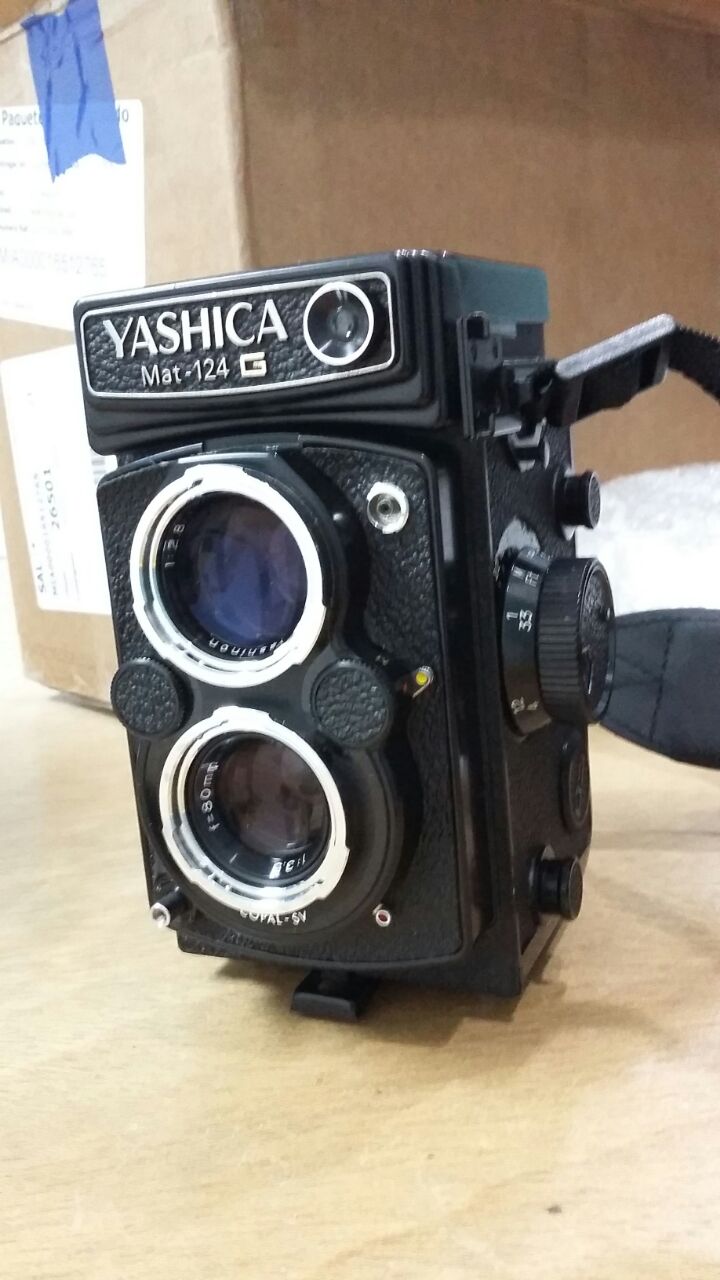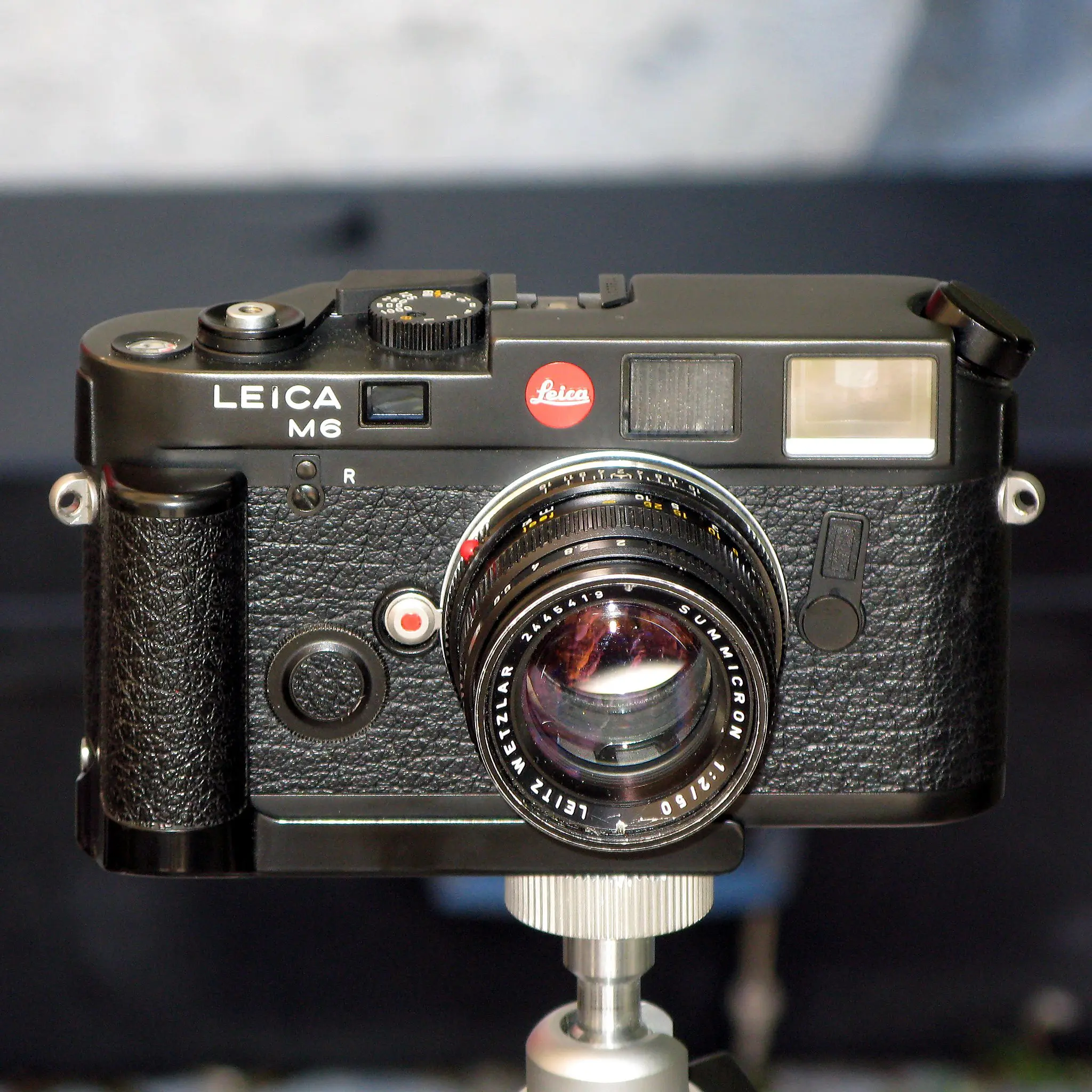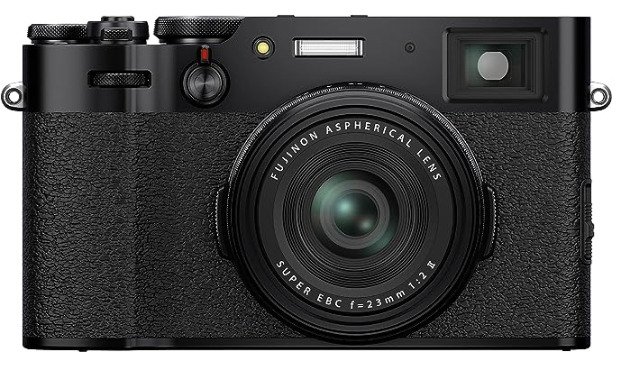Technology has given us infinite possibilities via digital photography, and it also precipitated an almost complete annihilation of analog and chemical-based photography. However, thanks to a weird mixture of events, analog photography has regained some strength after the devastating blow that digital photography gave to it.

Not only has the camera produced incredible art
Updated: Oct 23 – added infographic.
Whether it’s because of curiosity or in defense of the photographic quality that chemical processes produce, analog photography has regained popularity these days. And it has become easy to once again access the analog photography world – at least the camera part of it.
Here we present 10 analog cameras you can choose from, sorted by name. Anyone of them is worth buying if you want to discover analog photography (again or for the first time). The only thing that might dictate your purchasing decision may be your budget. These cameras can still be found in decent shape on various internet sites.
Canon AE-1
This reliable camera was introduced in 1976. Beyond its manual capabilities, this was the first 35mm SLR camera to use a central processing unit (CPU). This CPU was the mastermind of the exposure memory, aperture value control, and self-timer. The rest of the camera’s functions, such as shutter speeds and exposure counter, were analog.
This camera became the best-selling SLR camera of its day, with 5 million units sold.
Hasselblad 500c/500cm
This classic was introduced in 1957 and is still a much-desired camera among photographers. It was the successor to both the earlier 1600F and 1000F Hasselblad cameras. The format remained the same – a 2¼-inch square reflex medium-format SLR camera. This camera offered a full aperture viewing diaphragm and many other goodies that were novel at the time. The great thing about this modular system is that, thanks to its interchangeable film magazines, you can change mid-run film rolls for other rolls without switching cameras.
In 1970, the 500C/M was introduced with some slight modifications.
Pentax K1000
This camera was built to last. It’s like a small tank in which you can trust your film, no matter the conditions. The K1000 was introduced in 1976, and due to its simple yet excellent build quality, it is considered to be a historically significant camera. Its inexpensive ease of use was a great thing and earned it huge popularity as a basic, sturdy workhorse.This is an excellent choice for anyone trying to get involved in film photography.
Leica M6
Now we're talking serious stuff. This camera was introduced in 1984 and is still expensive compared to many other film cameras. But it is an accessible way to enter the Leica world. This camera was conceived as a Leica M4-P with a built-in exposure meter.
Yashica MAT 124G

This is a different type of camera and belongs to the TLR camera family. This camera was first introduced in 1970 and remained in the market through 1986. It was the last TLR camera produced by Yashica, and even though it was seen as part of an obsolete system, it saw great success. This is an excellent choice for anyone trying to take medium-format film into the streets since TLR cameras are quite inconspicuous.
Nikon FM2

This magnificent workhorse was introduced in 1982 by Nippon Kogaku of Tokyo and was the last mechanical SLR built by Nikon.
Niche-marketed for its anti-auto settings, the company sold it as the “The Perfectionist's Nikon”. This camera had flash sync to 1/200 of a second and a 1/4000 shutter speed as well. These things seem standard nowadays, but back then, these two settings were groundbreaking, because they were the fastest settings available.
A great thing about Nikon cameras is that they haven't changed the Nikkor lenses mount, so you can use old optics on new bodies, and vice versa.
Kodak Retina II
This may be the easiest way to enter the silent and stealthy world of rangefinder focusing cameras. This camera has a long history, and this specific model can still be found in pretty good shape. This camera is lightweight, compact, discreet, and easy to use.
Voigtländer Vitessa
Like the Retina, the Voigtländer Vitessa was a compact camera thanks to the folding mechanism accompanying its lens. This is another good camera for learning about rangefinder focusing but is a bit more expensive than its cousin, the Retina.
This camera was introduced in the 1950s, and since its introduction its quality was noticeable. The most expensive models came with a 50mm f/2 Ultron lens. They all were made with fixed optics.
Rolleiflex

This camera is (almost) the Leica equivalent of TLR cameras. This medium-format camera was the one used by the famous Vivian Meier. They were sold with various lens options, from f/2.8 lenses to f/3.5 lenses. That extra stop of light really makes a difference, hence the price gap between the models.
They all were built by the prestigious German company, Rollei, and their full TLR lineup was built around the “Rolleiflex” brand. This camera is a perfect companion for those trying to achieve quality and an incredible photographic experience.
Cambo 4X5 45 SF View Camera
We can't omit the famous large-format cameras from our analog camera list. This camera may be the most accessible (with great quality) option for adventurous photographers who are curious about the wonders of large-format cameras.
Getting involved in the world of analog photography requires access to an analog camera. You can try developing and printing your film at some point – but as a starting point, use a professional photo lab.
It’s important to always bear in mind that it really doesn't matter whether you’re shooting analog or digital. The key thing to remember is that all cameras are just formats for capturing light and that you must create your photographs with passion – and practice every day.













10 Comments
No Olympus camera…?
Great article, especially for us old film buffs. We of course have some other possibilities for this list but then 50 would be too much,lol.
Another alternative to the Hassi is the Bronica. It’s lenses are reasonably available and cheaper on eBay because the shutter is in the camera body and not the lenses as in the earlier Hassis. I have a 1963 Bronica S and with Nikkor glass it still fun to shoot BW with.
Olympus OM-1 and OM-2 were and are still classics!
I’ve had my Nikon F2AS since I was 19, now I’m 62. Never missed a beat, still use it for ‘serious’ photography when I can get my hands on some Fugichrome.
I’m a Nikon film camera collector: From he rangefinders “S1″/Ms till the SP. SLRs from the first Fs till the F2AS. In my opinion the F2AS is the pinnacle of all 35mm film cameras. I have a chrome as well a the black model.
Best 35mm film camera of all time!
I still have my AE-1! Many great shots and many happy hours. Right now I have a roll of Ilford 3200 in the camera (I shoot in clubs). Ive gone digital using the Canon 5DMKII, 6D, SONY 7A! However, I now have to finish that Ilford 3200! Plus, I no longer process my own film, or have a darkroom!
The 124G is such an overrated camera. It is the TLR where Yashica went with plastics internally instead of the usual metal. There are Yashica TLRs with match needle metering and metal internals that will last longer, and look better, than the G.
If you talk about must have cameras that are worth the money, I would put away the Yashica Mat124G and suggest a Minolta Autocord instead. Much better camera with an amazing glass in comparison. Very close to the Tessar lens in a Rolleiflex. Minolta stood above the crowd in everything they did.
Two great cameras that should also be considered are the Mamiya C2 series, not combined film shutter wind so they last longer,
& the Agfa Karat’s which were also vest pocket style. The Karat’s came with an array of lenses from Zeiss, Schneider, Rodagon & house brand Agfa.